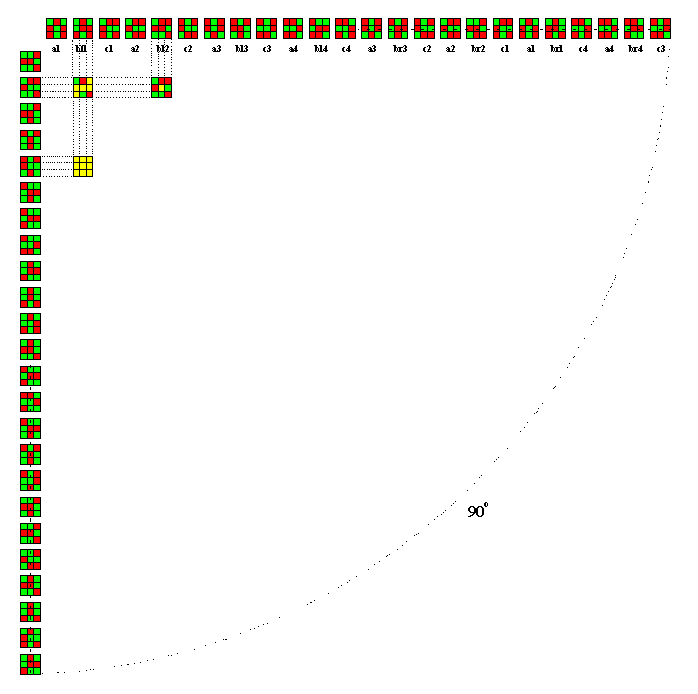
Sonakul MEEJOROEN, Neither One Wins, 1996 In the game of tic-tac-toe, there are three, typically different configurations of the nine-square gameboard, when completely filled with Xs and Os, that are the relics of neither player winning. Two of the pattern types of these stalemates are superposable; one type is not. The determinative statement of the program was introduced by the designer in the first three, abutted, nine-square blocks of the horizontal red and green band-the three types of stalemates, in which each gameboard is occupied by five red (X) and four green (O) squares. Following the initial stalemate, the three boards were translated in their same order along the red and green band; at the same time, however, each board was individually reorientated by a counterclockwise rotation of 90 degrees. The same operations, in respect to each refiguration of the three board, were carried out twice more, producing a set of twelve variations of tic-tac-toe stalemates. As mentioned, one of the three pattern types of stalemates is not superposable-it possesses no reflective symmetry. There must, therefore, be a dual dissymmetric configuration; but that dual is not to be found, in any of its four orientations, among the first twelve gameboards. Consequently, the designer repeated the whole sequence of twelve gameboards in the second half of the red and green band, but flipped its image, in toto, in respect to a horizontal reflection. While both sets of stalemates that possess bilateral symmetry recur a second time in the band's second half (though scrambled in sequential order), the set of dissymmetric duals of the third type is, accordingly, picked up. The final procedure in the designer's programmatic setup was to rotate a duplicate of the complete horizontal band of 24 gameboards into a vertical position. The red and green squares are interchanged, however, in the vertical band so that each board is occupied by four red (X) and five green (O) squares. The significance of this switch is that, in the horizontal band, red (the X player) has gone first and, in the vertical band, green (the O player) has gone first. A matrix is then created by projecting, down from the horizontal band and over from the vertical band, gameboard upon gameboard. When a red square from one board coincides with a red square from the other (or a green square coincides with a green square), a corresponding red (or green) square is rendered; when, however, a red square is coincident with a green square, a yellow square is rendered. While, in want for clarity, there is some laboriousness in this verbal description of the program, the rules are relatively few and simple; yet the resulting matrix has an appearance of randomness: a homogeneous application of rules that derives a heterogeneous effect. It should be noted that the order and the orientations in the initial statement of the three gameboard types were both arbitrarily fixed. Therefore, different orders and different orientations of the initial three types would result in differently patterned matrices. (if the reader will but conform to this program, he is invited to execute, out of the set of 767 other possible setups, different design outcomes, albeit predetermined, from the one that has already been derived by this designer.) |
